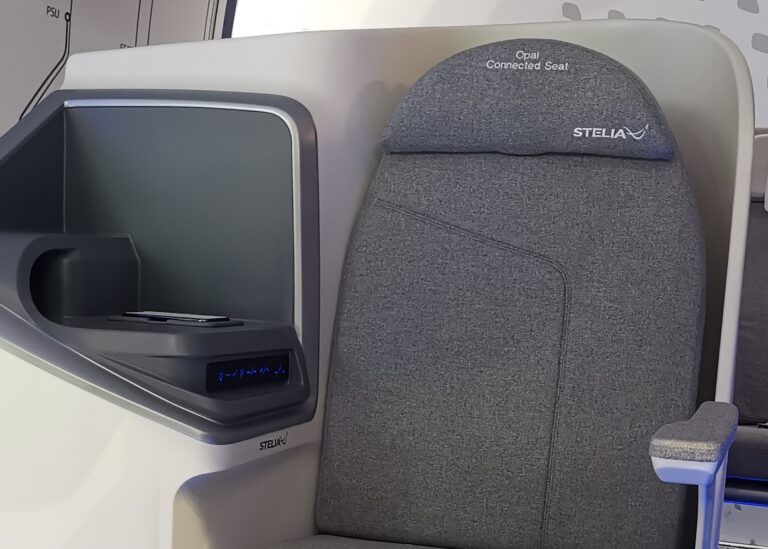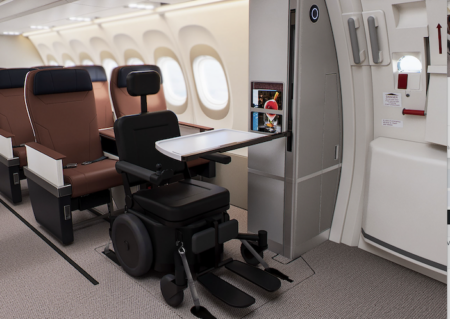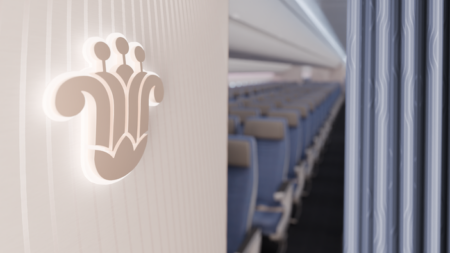Stelia Aerospace, which is owned by Airbus and is participating in the OEM’s Connected Experience program, has developed a connected version of its Opal seat. The Opal line itself has only been put into service recently by Air Senegal, with New Caledonia airline Air Calin to follow soon.
The system is intended both to make passengers more comfortable – for example by pre-setting it for passenger preferences – and to enhance the workflow of the crew by enabling them to see on a software application whether all seats are in TTOL position or if specific passengers need assistance.
In addition to dealing with and tending to passengers, the connected system also makes the maintenance side easier with declarative and predictive maintenance.
Claire Nurcombe, head of marketing for cabin interiors, explained, “you can’t put sensors on everything, but maintenance will still need to know if something happens in flight, so we have something we call declarative maintenance. That allows the crew on board to easily inform to the crew on the ground if something happens during flight or if a problem occurs. For example, if someone spills coffee all over a seat, the ground crew has to know that they need to replace the cover.”
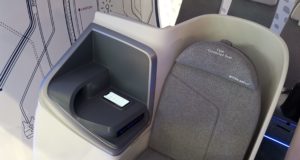
On the maintenance side, the system shows data from the sensors integrated in the seat functions. It will tell maintenance staff if, for example, the actuation system is broken, by showing an alert. This will allow the crew to pull the relevant parts out of stock to give them a fighting chance to make the repair while the aircraft is on the ground between flights and avoid having to make the seat inoperative.
In the long term, it also allows maintenance personnel to assess whether pre-set hard removal intervals are too cautious or well-judged, using live statistics on the performance of the seats.
Stelia has developed a software interface to view the status and control all the connected seats. It was running this application as a demo at its Aircraft Interiors Expo stand, but is looking to commercialize it.
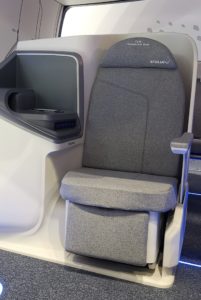 Nurcombe commented, “The software interface is something we are actively working on with airlines. We will be providing an SDK that will fit into their apps. We strongly believe that we need to link into existing apps – it’s a partnership”.
Nurcombe commented, “The software interface is something we are actively working on with airlines. We will be providing an SDK that will fit into their apps. We strongly believe that we need to link into existing apps – it’s a partnership”.
The system will be able to connect into an aircraft’s backbone to allow data to be recovered but it will also give the option to recover the data directly from the seat, either through wi-fi or a regular data download. The Airbus backbone is one option, but the system is OEM-agnostic.


